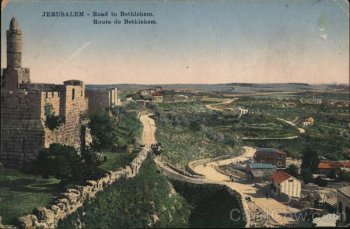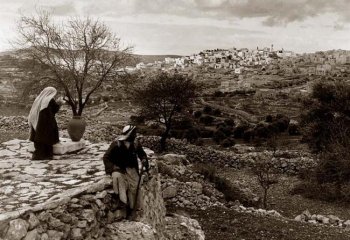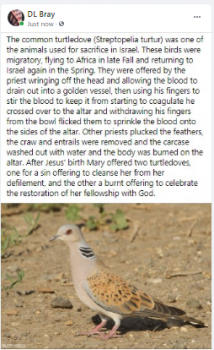Pilgrimer
Member
@Pilgrimer, it seems to me that you have made a number of assumption in coming to the conclusions that you did in coming to your understanding of the story of the birth of Christ.
If one takes the Gospel story found in Matthew Luke and Mark and arranges it in chorological order of when the respective events took place, then the arranged respective Biblical passages would look something like this: -
I have found the following breakdown of the early life of Christ, helps in putting the story in an understandable order for me to read. Perhaps this is of some use to others: -
Introduction to the story of Christ: -Matthew 1:1-17, Mark 1:1, Luke 1:1-4, John 1:1-5
Gabriel’s prophetic declaration of John the Baptist’s birth to Zechariah in the temple: - Luke 1:5-25
Mary hears the news from the angel Gabriel that she is to conceive a child: - Luke 1:26-38
Mary visits Elisabeth: - Luke 1:39-56
Joseph is told of the reason for Mary’s pregnancy: - Matt 1:18-25a
Joseph takes Mary with him to Bethlehem.: - Luke 2:1-5
Jesus is born: - Luke 2:6-7
Jesus is named: - Matt 1:25b
Angles tell shepherds out in the field of the birth of Christ: - Luke 2:8-14
The shepherds go to Bethlehem to see Jesus: - Luke 2:15-20
Jesus is circumcised: - Luke 2:21*
The wise men visit Jesus: - Matt 2:1-12
Joseph is warned in a dream to go to Egypt: -Matt 2:13-15
Herod has infants under two years of age killed in Bethlehem: -Matt 2:16-18
After Herod dies, Joseph returned to Galilee and dwells in Nazareth: -Matt 2:19-23
Jesus taken to Jerusalem and presented to the Lord: - Luke 2:22-24
Simeon takes Jesus in his arms and prophecies: - Luke 2:25-34
Anna comes to the temple and speak about the redemption of Jerusalem: - Luke 2:36-38
They then return to Nazareth: - Luke 2:39
The story of Christ’s early life occurred over a period of 45 days from the time that Christ was born of Mary until they returned to Nazareth after presenting Christ to God in the Temple in accordance with the Law.
The favour of God was upon Jesus: - Luke 2:40
* Please note that we are not told when Jesus was circumcised in accordance with the law. Jesus may have been circumcised while they were still in Bethlehem, but it is more likely that Jesus was circumcised after the visit of the wise men as they were journeying down to Egypt.
My understanding is that the journey time for travelling from Jerusalem down to Egypt was around five days and that the journey time from Egypt up to Nazareth would have been around three days longer, i.e. around eight days.
I hope that this helps you in sorting out the timeline for the early life of Christ.
Shalom
Shalom aleikem, mah s
 mcha?
mcha? For the most part I agree with your chronology, but I believe there may be a couple of issues. The first is, you say the accounts of the nativity take place over a 45-day period, which means all these things were accomplished by February 8. However, Herod did not die until after the lunar eclipse, which we know occurred on March 13, the night after Herod had the highly respected teachers Simon and Matthias and their students burned alive for having pulled down the golden eagle Herod had placed over one of the Temple gates (Josephus, Antiquities, Book 17, Chapter 6, 149-167). These historical events place Herod’s death sometime around the end of March, after the lunar eclipse of March 13 (allowing time for the events leading up to Herod’s death recorded by Josephus in Antiquities Book 17, Chapter 6:168 – 8:192) but before the Passover on Arpil 10 of that year (again, allowing time for the events that followed Herod’s death recorded by Josephus, Antiquities Book 17, Chapter 8:193-9:213).
The December 25 date for the birth of Jesus is unassailable as is Herod’s death occurring after the lunar eclipse of March 13. The lunar eclipse itself occurred some 77 days after Jesus’ birth, and then after Herod’s death the time it would take Joseph and Mary to return to Israel would have requried close to or just over two weeks (travel was difficult and according to those who have studied the logistics of the ancient world, a person on foot could travel approximately 20 miles per day, more for young, healthy males and less for the elderly and children. The distance from Jerusalem to Alexandria, Egypt, is 312 miles where the largest community of Jews lived anywhere outside Israel and where Joseph and Mary could easily be “lost” among the tens of thousands. At 20 miles per day that would be just over two weeks, possibly longer since Jesus was only two months old and even in the ancient world, traveling with an infant is difficult. That would add a bare minimum of 14 days plus the 77 to the eclipse and then another 10 to 12 days after the eclipse until Herod’s death racks up over a hundred days since the birth of Jesus. So I don’t think a 45-day window is possible.
Also, we do in fact know when Jesus was circumcised and received his name, the Scripture says: “And when eight days were accomplished for the circumcision of the child, his name was called Jesus.” (Luke 2:21) It was at the circumcision that a male child received his name, as witnessed by the account of the circumcision of John: “And it came to pass, that on the eighth day they came to circumcise the child: and they called him Zacharias, after the name of his father. And his mother answered and said, “Not so, but he shall be called john.’ (Luke 1:59)
The circumcision of a male child on the eighth day of life was commanded in the Law: “And in the eighth day the flesh of his foreskin shall be circumcised.” (Leviticus 12:3)
It was also written in the Law that when a woman gave birth to a male child, she was “unclean” for seven days, and would continue in her purifying flow for another 33 days, making a total of 40 days. Once those days were accomplished she must present herself and her son at the “door of the tabernacle” and for her cleansing she was to offer a turtledove or young pigeon for a sin-offering and, if she could afford it, a lamb for a burnt-offering, a second turtledove or young pigeon if she could not afford the lamb. If her firstborn son had been her first child, then as with all firstborn males they belonged to God (in commemoration of their being spared when God passed through Egypt and slew all the firstborn sons of man and beast. Thereafter, all firstborn males, of man and beast, belonged to God and were “holy.” (Exodus 13:11-16) Originally, the firstborn sons were to be the “priests” of the families but after the sin of the golden calf, they lost their status and God appointed the Levites to the priesthood. But the firstborn sons still belonged to God and must be presented to him at the temple and the father must “redeem” him (purchase him back from God).
All of this was spelled out in the Law and since Luke records that: “And when eight days were accomplished for the circumcision of the child, his name was called Jesus” and also “And when the days of her purification according to the law of Moses were accomplished, they brought him to the Lord; (According to what is written) …” Luke 2:21-23 So according to Luke, Joseph and Mary did everything “according to the Law,” and the Law stipulated the day on which circumcision, purification, and redemption was to be observed. There is no reason to assume that Joseph and Mary fulfilled their duties at a time other than what was written in the Law.
Plus, you have the difficulty that when the Holy Family returned from Egypt, and Joseph heard that Archelaus was ruling in Judaea, he was afraid and was warned by God in a dream to not go into Judaea, so they would have had to take the coast road to get to Galilee. But by your reckoning, Joseph would have turned around and brought Mary and Jesus back from Nazareth to Jerusalem where Archelaus still ruled and which Joseph had been warned by God to avoid. Which hardly seems plausible.
So if you move the last portion of your chronology, Mary’s purification and Jesus’ redemption, up to the 41st day after birth as required by the Law, that would work out to February 3 being the 41st day of life and the day on which the Law required the mother’s sacrifice for atonement, shortly before the visit of the Magi which precipitated the flight to Egypt before Herod's death in March.
In Christ,
Pilgrimer




